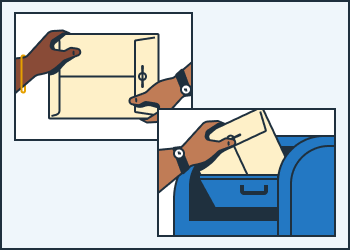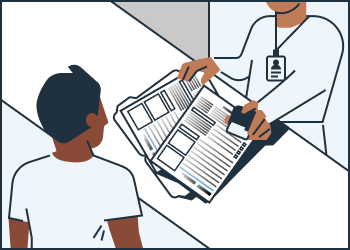Serve by posting
If the judge agreed that you can serve by posting, you will need to arrange for your court papers to be posted in the court house for 28 days. Then, you (or the person who posted the court papers) must file a form saying that the court papers were posted for the required 28 days.
Before you start
Check where the judge ordered you to post the papers
Make sure you know where the judge ordered you to post the papers. It could be a different courthouse from where you filed the first papers to start your case. Look at which courthouse is listed in #2 of the FL-982.
How to serve by posting
-
Choose a server to post
You can't post court papers yourself. Usually, the court clerk will post them and fill out the form saying they were posted. But check the orders or check with the court clerk to make sure you are not supposed to do it some other way.
If court staff does not post the papers, ask another adult – a server – to post the papers. They only need to post the papers listed in the order.
Your server must be:
- 18 or over
- Not part of your case
Your server can be someone you know. Or, you can pay someone to post the papers, called a process server.
-
Have server post the papers in the courthouse
Your server or the clerks posts the papers listed in the order.
-
Have server mail a copy of the papers (if required)

- Mail court papers and Order for Posting
If there is a last known address listed in #2 of your Order for Posting (form FL-982), your server must mail a copy of the papers along with a copy of the Order for Posting (form FL-982) to your spouse, domestic partner, or the other parent at the address listed. If there is no address there, you do not have to do this step.
- Fill out Proof of Service
Then your server must fill out a Proof of Service by Mail (form FL-335) (opens in a new tab).
- Mail court papers and Order for Posting
-
Copy and file Proofs of Service

- Make a copy of your Proof of Service (form FL-985). (If the clerk posted the papers, they may have already done this step and filed the FL-985, so ask the clerk). If you also have a Proof of Service (form FL-335), make a copy of that one too.
- File the originals and copies with the court where you filed the papers. The court will stamp and return the copy. Keep the copy of the Proof of Service forms for your records.
-
Wait to see if other person responds
You must wait 59 days from the day your server posted the papers before you can move ahead with your case.
- First, you wait 28 days while the papers are posted
- Then, once 28 days are over, you have to wait another 30 days
If the other person doesn't file a response in that time, the next day (the 59th day) you can file a request for a default. A default stops them from being able to respond in court.
You must have a server mail the papers to that address. Your server must fill out and sign a Proof of Service by Mail (form FL-335) (opens in a new tab) and return to you to file with the courtIf you waited the 59 days and your spouse didn't response to divorce papers, you can ask for a default and finish your divorce.
You are done serving these papers. You must wait to see if the person responds. If they don't, you can take the next step in your case.

